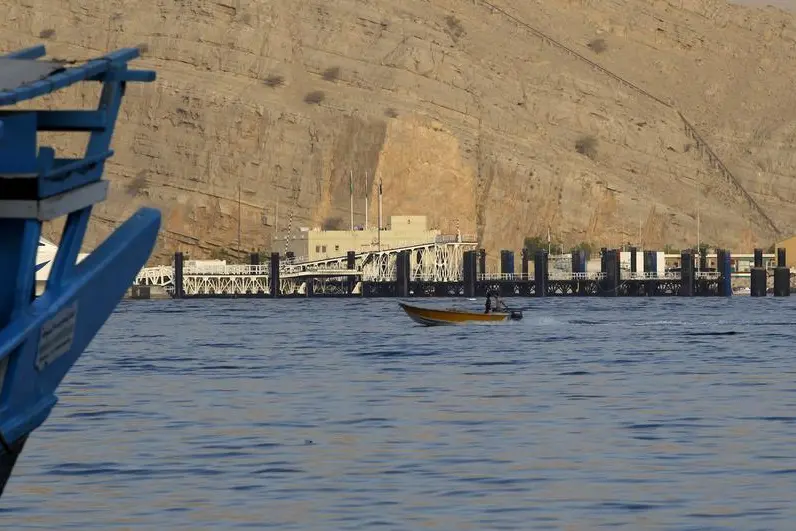PHOTO
Energy stocks were the best performers on global markets last week. On the back of increased tensions in the Arabian Gulf, oil was up around 7.7 percent between Monday and its highest point on Friday. It opened at 64.90 for Brent in early European trading.
Events overtook themselves last week. After markets only reacted temporarily to the attacks on two tankers in the Gulf of Oman two weeks ago, tensions markedly ratcheted up when the Iranians shot down a US drone. Retaliatory US airstrikes on several Iranian targets were aborted at the last minute. US President Donald Trump has announced that further economic sanctions on Iran will be forthcoming. He also said he was open to talks with Tehran without preconditions but would react to provocations.
The US has vowed to do whatever it takes to keep the Strait of Hormuz open. Secretary of State Mike Pompeo is visiting Saudi Arabia and the UAE to discuss the situation and explore building an alliance. US special representative on Iran Brian Hook told CNBC that the US would be looking for contributions when prodded about the fact that US efforts to keep the Strait of Hormuz open primarily benefited tankers taking crude to Asian off-takers. During the interview, Hook also said that the administration kept an eye on the oil price when determining how to deal with Iran. Pompeo had made similar assertions earlier.
Apart from tensions in the Gulf, we are a week away from the next OPEC/OPEC+ meetings in Vienna and less than a week away from the G20 summit in Osaka. Both events will have a significant impact on the trajectory of the oil price over the coming months.
The G20 matters because the meeting between Chinese President Xi Jinping and his US counterpart Donald Trump may decide whether or not a resolution to the trade tensions between the two countries is in sight. It will also give an indication on how the US will eventually move on other trade fronts, namely Mexico, Europe and India, which all have their own set of issues. The global economic outlook and especially trade have a huge impact on the oil price. Less trade and a localization of supply chains equal less demand for the world’s premier transportation fuel. Unless a resolution of at least some of the trade issues is on the horizon, the global economic outlook will be dimmed.
Trade wars have already forced the World Bank Group to downgrade its global economic growth forecast from 3.9 percent in January 2018 to 2.6 percent in June of this year. The International Energy Agency (IEA) followed suit and downgraded its forecast of oil demand for this year by 100,000 barrels per day (bpd) to 1.2 million.
This was the second downgrade in as many months. When it comes to the supply-demand balance, the IEA had a bearish forecast for next year. Non-OPEC supply was to increase by 2.3 million bpd, which would roughly double the current production cuts of OPEC and its 10 non-OPEC allies commonly referred to as OPEC+. The call on OPEC crude will be 600,000 below its current production. The organization could boast 169 percent compliance of its production cuts due to Iran sanctions, Venezuelan production falling off a cliff and quality issues regarding Russia’s Druzhba pipeline.
This brings us to next week’s OPEC+ meetings in Vienna. Saudi Energy Minister Khalid Al-Falih said last week in Russia that he was confident the production cuts would be rolled over. The impending non-OPEC supply glut and the falling oil price for most of May and June have so far kept Russia on side with a rollover. Many observers even question whether 1.2 million barrels is a deep enough cut.
A lot will depend on how the tensions in the Gulf evolve over the coming week. The higher the oil price, the bigger the temptation for Russia to steer away from the production cuts once the Druzhba issues are resolved. Russian Energy Minister Alexander Novak is under pressure from several oil producers in Russia who have new capacity and want to see more Russian crude on the international markets.
The G20 may give some visibility on what we can expect in terms of demand. If trade wars still loom large, the bearish supply-demand picture will have the biggest influence on OPEC decision-makers, as long as the Strait of Hormuz is kept open. The smart money is therefore still on a rollover of the production cuts. If there are more issues in and around the Strait of Hormuz, all bets are off, as one in five barrels has to pass this narrow sea lane to reach global markets.
- Cornelia Meyer is a business consultant, macro-economist and energy expert. Twitter: @MeyerResources
Copyright: Arab News © 2019 All rights reserved. Provided by SyndiGate Media Inc. (Syndigate.info).












